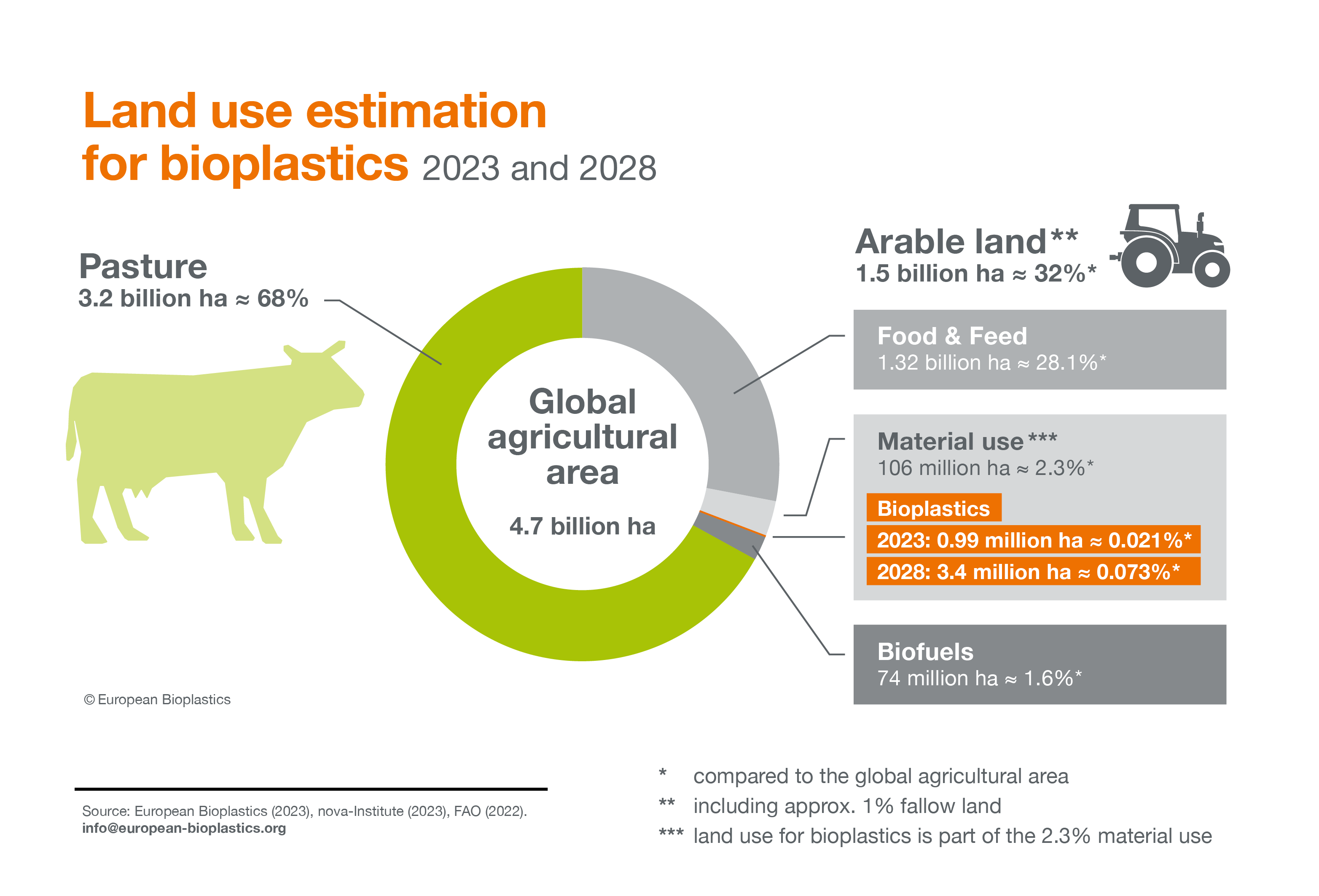Today, bioplastics are mostly made from carbohydrate-rich plants, such as corn or sugar cane, so called agro-based or 1st generation feedstock. Currently, 1st generation feedstock is the most efficient feedstock for the production of bioplastics as it requires the least amount of land to grow on and produces the highest yields.
The feedstock currently used to produce bioplastics relies to a little bit more than 0.01 percent of the global agricultural area (4.7 billion hectares) – compared to 96 percent of the area, which is used for pasture and the production of food and feed. Despite the predicted continued growth in the bioplastics market at the current stage of technological development, the share of global agricultural area used to grow feedstock for the production of bioplastics will only slightly increase to still below 0.07 percent in 2028. This clearly demonstrates that there is no competition between food/feed and industrial production.
A report by Wageningen Food & Biobased Research (Biobased and biodegradable plastics – Facts and figures, 2017) calculates that “even if we would base all present world-wide fossil plastics production on biomass as feedstock instead, the demand for feedstock would be around 5 percent of the total amount of biomass produced and harvested each year”. Yet, this scenario is unlikely to happen, as the bioplastics industry is also looking into the use of non-food crops (ligno-cellulosic feedstock), such as wood, straw, as well as waste products and side streams of the agro-industry to produce bioplastics. Using an increased share of food residues, non-food crops or cellulosic biomass could lead to even less land needed for bioplastics than the numbers given above.
